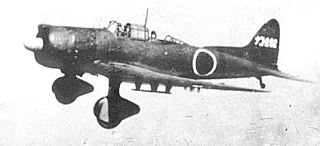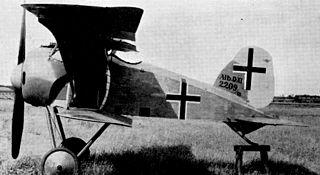
The Lockheed F-117 Nighthawk is a semi-retired American single-seat, twin-engine stealth attack aircraft that was developed by Lockheed's secretive Skunk Works division and operated by the United States Air Force (USAF). It was the first operational aircraft to be designed around stealth technology.
NATO reporting names are code names for military equipment from Russia, China, and historically, the Eastern Bloc. They provide unambiguous and easily understood English words in a uniform manner in place of the original designations, which either may have been unknown to the Western world at the time or easily confused codes. For example, the Russian bomber jet Tupolev Tu-160 is simply called "Blackjack".
The United States military aircraft designation system was first designed in 1919 when the US Army's Aeronautical Division became the United States Army Air Service. Before this aircraft were put into service under their manufacturers' designations.

An attack aircraft, strike aircraft, or attack bomber is a tactical military aircraft that has a primary role of carrying out airstrikes with greater precision than bombers, and is prepared to encounter strong low-level air defenses while pressing the attack. This class of aircraft is designed mostly for close air support and naval air-to-surface missions, overlapping the tactical bomber mission. Designs dedicated to non-naval roles are often known as ground-attack aircraft.
F-19 is the designation for a hypothetical US fighter aircraft that has never been officially acknowledged, and has engendered much speculation that it might refer to a type of aircraft whose existence is still classified.

The Lockheed T-33 Shooting Star is an American subsonic jet trainer. It was produced by Lockheed and made its first flight in 1948. The T-33 was developed from the Lockheed P-80/F-80 starting as TP-80C/TF-80C in development, then designated T-33A. It was used by the U.S. Navy initially as TO-2, then TV-2, and after 1962, T-33B. The last operator of the T-33, the Bolivian Air Force, retired the type in July 2017, after 44 years of service.
The Japanese military aircraft designation systems for the Imperial period (pre-1945) had multiple designation systems for each armed service. This led to the Allies' use of code names during World War II, and these code names are still better known in English-language texts than the real Japanese names for the aircraft. A number of different schemes were simultaneously in use.

Aichi Kokuki KK was a Japanese aircraft manufacturer which produced several designs for the Imperial Japanese Navy. After the war, the company was reorganized as Aichi Machine Industry Co., Ltd (愛知機械工業) where they made small kei cars until 1966 when they were integrated into Nissan and developed the Nissan Sunny and Nissan Vanette.

The Idflieg designation system was used to classify German heavier-than-air military aircraft from the early days of the Fliegertruppe/Luftstreitkräfte to the end of World War I. The system evolved during this period as new classes of aircraft came into use.

The Tri-Service aircraft designation system is a unified system introduced in 1962 by the United States Department of Defense for designating all U.S. military aircraft. Prior to then, the U.S. armed services used separate nomenclature systems.

The Deutsche Luftstreitkräfte —known before October 1916 as Die Fliegertruppen des deutschen Kaiserreiches abbreviated to Die Fliegertruppe—was the air arm of the Imperial German Army. In English-language sources it is usually referred to as the Imperial German Air Service, although that is not a literal translation of either name. German naval aviators of the Marine-Fliegerabteilung were an integral part of the Imperial German Navy. Both military branches operated aeroplanes, observation balloons and airships.

The Boeing C-137 Stratoliner is a retired VIP transport aircraft derived from the Boeing 707 jet airliner used by the United States Air Force. Other nations also bought both new and used 707s for military service, primarily as VIP or tanker transports. In addition, the 707 served as the basis for several specialized versions, such as the E-3 Sentry AWACS aircraft. The designation C-18 covers several later variants based on the 707-320B/C series. The C-137 should not be confused with the similar Boeing C-135 Stratolifter; although they share a common ancestor the two aircraft have different fuselages.
The DFS Model 6 was a target glider built by Deutsche Forschungsanstalt für Segelflug in 1936. It was intended for anti-aircraft training, but only prototypes were built. It was assigned the RLM designation 8-6.







